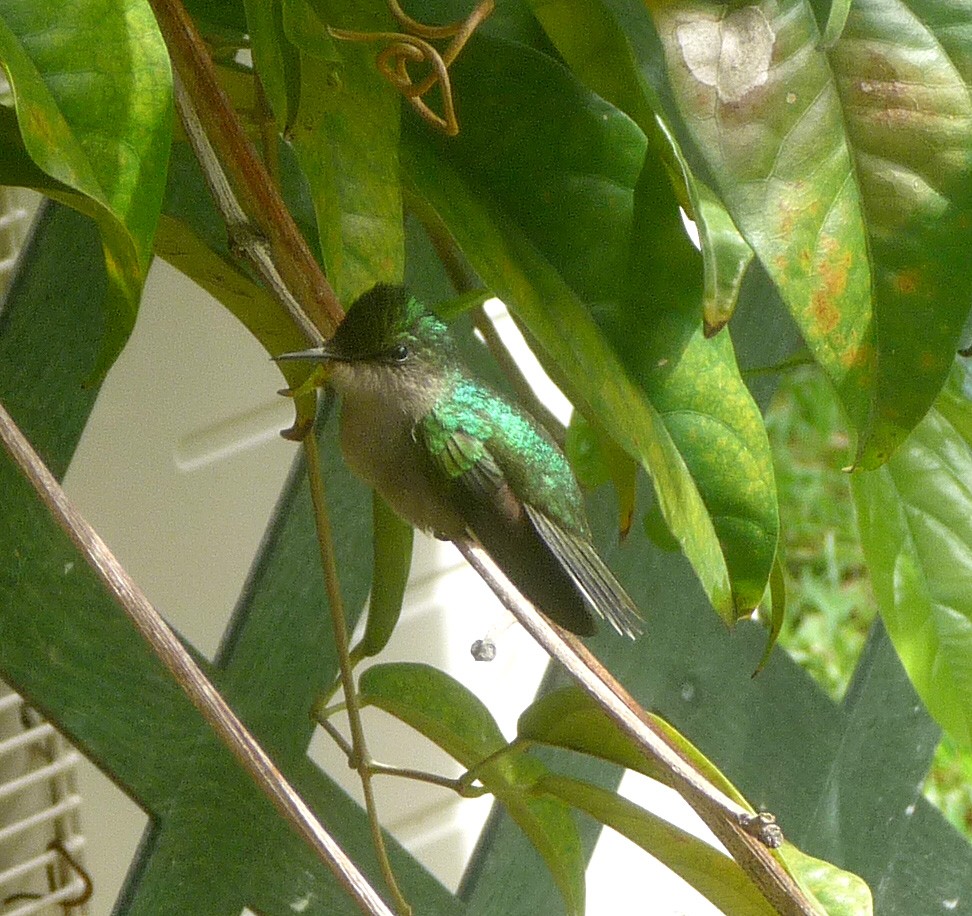Antillean Crested Hummingbird
A species of Antillean crested hummingbird Scientific name : Orthorhyncus cristatus Genus : Antillean crested hummingbird
Antillean Crested Hummingbird, A species of Antillean crested hummingbird
Botanical name: Orthorhyncus cristatus
Genus: Antillean crested hummingbird
Content
Description General Info
Description
As the name implies, Antillean crested hummingbird is one of the few hummingbirds with a crest. It demonstrates the general sexual dimorphism for hummingbirds where the male is bright and colorful whilst the female is more tannish and dull. Males have a short straight black bill; head with green crest, tipped metallic green to bright blue-green, upperparts dull metallic bronze-green; underparts sooty black; tail black, rounded. The female bill is similar to male’s but its head is without a crest; the forehead, crown and upperparts are metallic bronzy-green; underparts light grey; tail blackish, rounded, four outer rectrices broadly tipped whitish grey. The subspecies can be distinguished by the colour of their crests: exilis is wholly green or slightly tinged blue on tip; ornatus has the terminal portion abruptly blue; cristatus is golden to emerald, violet terminally; emigrans is similar to the nominate but more bluish violet, throat paler grey; the degree of paleness in underparts of female varies with race. Calls include short "tsip" or "tzip" notes and a longer series of “tslee-tslee-tslee-tslee”. 
Size
10 cm
Colors
Brown
Black
Green
Purple
Nest Placement
Cavity
Feeding Habits
Antillean Crested Hummingbird primarily consumes nectar from shrubs, vines, and lower tree levels, supplementing its diet with small arthropods. It exhibits specialized foraging techniques adaptable to its varied food sources.
Habitat
Antillean Crested Hummingbird typically inhabits environments ranging from sea-level to mountainous regions, thriving within open vegetation areas, parks, and plantations. Commonly, this species prefers locales near forest borders. While adaptable across various elevations, antillean Crested Hummingbird is most frequently encountered below 500 meters, where the habitat meets its requirements for food and nesting.
Dite type
Nectivorous
General Info
Feeding Habits
Bird food type
Behavior
This species holds the first record of any avian species that became prey to an amblypygid, otherwise known as a tailless whipscorpion; it is unclear though whether or not the amblypygid caught the bird as the animal was already observed deceased. The Antillean crested hummingbird had also been observed attacking the nest of a saddled anoles (Anolis stratulus). The antillean crested hummingbird and many other trochilid hummingbirds display agonistic behavior towards not only other species of hummingbirds but also other noncompetitor bird species, reptiles and insects, which can have for effect to locally reduce biotic diversity and associated ecosystem services. 
Distribution Area
Its natural habitats are subtropical or tropical moist lowland forest, semiarid forest and heavily degraded former forest such as open vegetation, parks, plantations, forest borders from sea-level to high mountains. Commonest below 500 m. It lives a sedentary lifestyle, with possible dispersal to higher altitudes in Jul/Aug. Subspecies exilis is rare straggler to the United States. 
Species Status
Not globally threatened.
Scientific Classification
Phylum
Chordates Class
Birds Order
Swifts and hummingbirds Family
Hummingbirds Species
Antillean Crested Hummingbird 